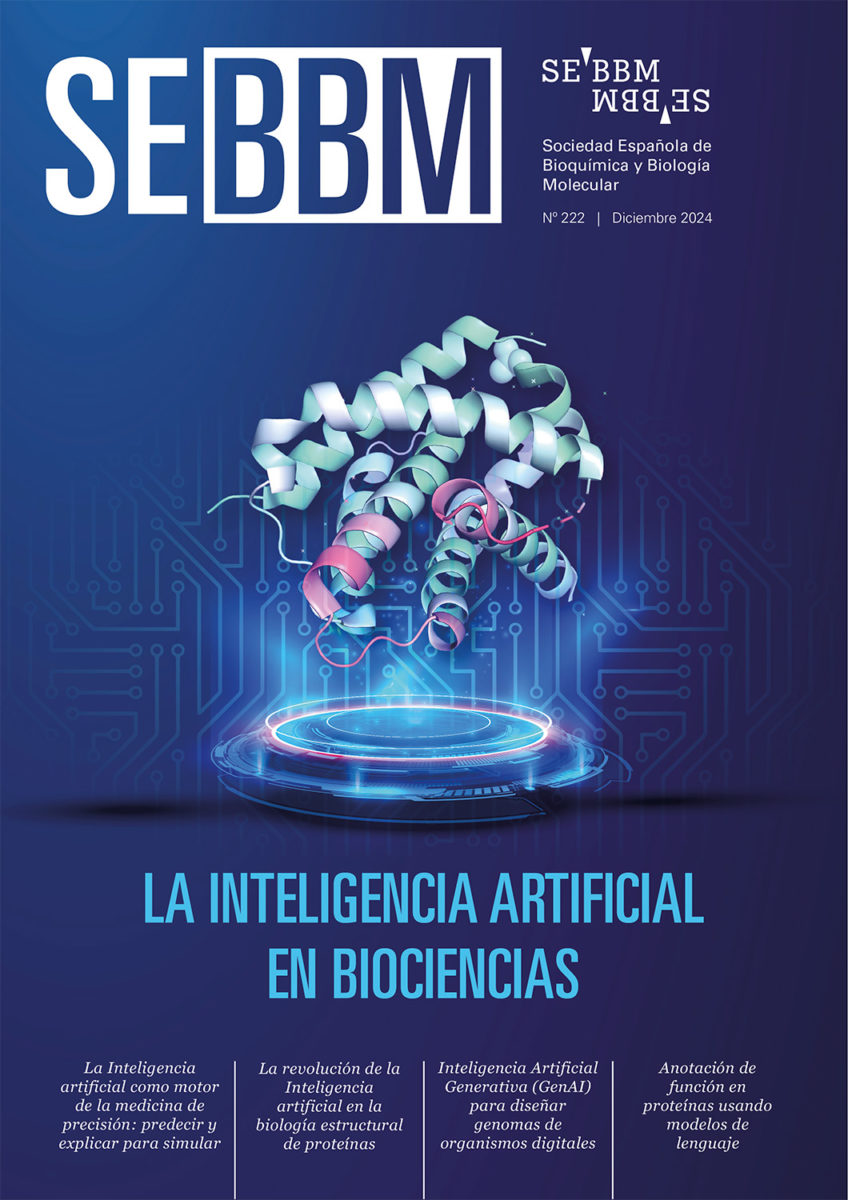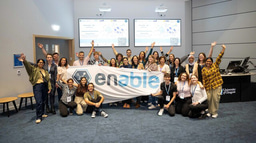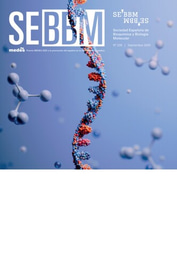SEBBM Journal, issue nº 222: “Artificial intelligence in biosciences”

The SEBBM Journal is a channel for analysis, reflection and dissemination of scientific activity in Spain and of public and private research policies. Its origins date back to 1963 and it currently publishes thematic issues covering transversal research in the field of biochemistry and molecular biology. The articles are commissioned to the best specialists in the subject. Each issue also highlights the most relevant educational and scientific work of SEBBM members, and SEBBM news.
The current issue “Artificial intelligence in biosciences” (nº 222, December 2024) has been coordinated by Dr. Ana M. Rojas from Computational Biology and Bioinformatics Group, Andalusian Center for Developmental Biology (CABD-CSIC), Conexión BCB.Hub, and is available at https://sebbm.es/revista/numeros/la-inteligencia-artificial-en-biociencias/
“Biology and Artificial Intelligence (AI) have been reluctant partners: each goes its own way. Like a bad dance, they have interacted uncoordinated and at different paces. Biology is subtle, subjective and changeable, moving in a context where the exception is perhaps the rule. In contrast, AI is an insatiable machine that requires large volumes of data, homogeneous and structured. With such scarce and variable data... it's hard to make the dance work!
However, there are those meeting spaces where the two can align. In the field of computational biology, in fact, AI has been present for decades. AI has been used in tasks such as the classification of biological sequences (proteins, DNA), with an emphasis on protein secondary structure prediction. Since its inception in the 1980s, C. Sander together with B. Rost re-implemented it in neural networks for the same purpose. Since then, these methodologies have formed part of the methodological arsenal of bioinformatics.
AI has undeniably demonstrated a unique transformative potential, as evidenced by the award of the 2024 Nobel Prize in Chemistry to the design of functional artificial proteins and AI algorithms for protein tertiary structure prediction. These advanced methods are here to stay and are evolving at an exponential rate. New models, including foundational and modified models, are published every week. Among them, language models for proteins, derived from natural language processing (NLP), have proven to be particularly powerful, as we have witnessed in the latest function prediction methods assessment exercise (CAFA5) presented at ISMB2024. Among the top 10, 9 are based on language models. However, these methods present significant challenges. The scalability of data production to train foundational models remains a problem, and the interpretability of these models - veritable ‘black boxes’ - has given rise to an emerging field: Explanatory Artificial Intelligence (XAI).
AI is here to stay and its transformative power will be increasingly evident. However, will we be able to take advantage of these advances generated in the technology industry in a free and transparent way?
Issue nº 222 of SEBBM Journal includes four articles that we believe convey the message we want to share:
Dr. Fátima Sánchez Cabo and her collaborators Lucía Sánchez García and Inés Rivero, from the CNIC, present applications of AI in biomedicine, particularly in precision medicine, and introduce concepts of causal inference and advances in generative and explanatory AI. https://doi.org/10.18567/sebbmrev_222.202412.dc1
Dr. Pablo Chacón Montes (coordinator of the CSIC connection of Computational Biology and Bioinformatics, BCB.Hub) from the IQF ‘Blas Cabrera’, CSIC, explains how AI has transformed the field of structural bioinformatics and describes the development of language models in structure prediction. https://doi.org/10.18567/sebbmrev_222.202412.dc2
Dr. Miguel A. Fortuna (BCB.Hub) and his collaborator Francisco J. Borrallo-Vázquez, both at EBD, CSIC, describe applications of generative AI in synthetic genomics, in particular for the creation of digital twins using Generative Antagonistic Networks (GANs). https://doi.org/10.18567/sebbmrev_222.202412.dc3
Drs. Ildefonso Cases (BCB.Hub), Ana Rojas (BCB.Hub), both at CABD, CSIC, Dr. Rosa Fernández (BCB.Hub) and her collaborator Gemma Martínez Redondo, both at IBE, CSIC, describe the problem of functional annotation of proteins and the application of language models applied to proteins to annotate unknown gene functions in millions of sequences. https://doi.org/10.18567/sebbmrev_222.202412.dc4 ”
Part of this post is a translation of an article written in Spanish by Dr. Ana M. Rojas, from Andalusian Center for Developmental Biology (CABD), CSIC, and published on the SEBBM website on December, 2024.
Reference: https://sebbm.es/revista/dosier/la-inteligencia-artificial-en-biociencias-2/




Join the FEBS Network today
Joining the FEBS Network’s molecular life sciences community enables you to access special content on the site, present your profile, 'follow' contributors, 'comment' on and 'like' content, post your own content, and set up a tailored email digest for updates.